Latest News
Protecting Human Health in a Changing Climate
Posted by on July 17, 2013 at 3:02 PM EDT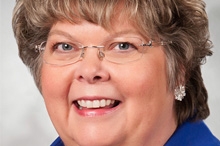
Therese Smith is being honored as a Champion of Change for her work on the front lines to protect public health in a changing climate.
Climate change and public health go hand in hand. Illustrating this point, in Healthy People 2020 the Department of Health and Human Services outlines its objective to promote health for everyone through a healthy environment. To do that, we must focus on six different areas including outdoor air quality, our homes and communities, ground water, toxic substances and hazardous wastes in our air, water and land, and our entire global environment.
My job as a public health professional is to try and make a difference one person at a time, one place at a time, if at all possible, by educating, volunteering, and letting people know that clean air is everyone’s responsibility—we all need to breathe it!
The American Lung Association of the Midland States has given me a platform to educate more people about the link between air quality and chronic conditions, such as lung disease, diabetes, and heart disease. As an advocate in various clean air campaigns, I continue to make sure that everyone everywhere gets the chance to breathe the cleanest air possible, both indoors and out.
I work in my community and across the state of Michigan through Blue Cross Blue Shield of Michigan as a Health Advocate and Chronic Condition Case Manager to educate members about lung disease and the importance of a healthy environment. I educate members with asthma, chronic obstructive pulmonary disease, and other respiratory illnesses that are affected by poor air quality.I make sure they understand how they can make small changes to protect their health on ozone action days, when weather conditions make it likely that ground-level ozone will approach unhealthy levels and are cautious about air pollutants to help improve their quality of life and hopefully their environment too.
I am currently working on my PhD in Public Policy and Administration with a focus on Health Policy to make a difference in changing the course of health policy – to make a difference in the world – so we can all breathe cleaner air.
Therese Smith is a Nurse.
Learn more about Energy and Environment, Health CareSupporting Military Readiness and Training through Environmental Conservation
Posted by on July 17, 2013 at 2:43 PM EDTLast week, the Obama Administration announced a new federal, local, and private sector collaboration that will preserve agricultural lands and restore and protect wildlife habitat, all while helping to sustain military readiness.
Known as the “Sentinel Landscapes” partnership, the effort is kicking off with a pilot at Joint Base Lewis-McChord, an important training facility for our troops in the South Puget Sound region of Washington State, and home to some of the last remaining native prairie habitat for wildlife in the state.
This unique convergence of landscapes comes with unique challenges. Namely, as development comes closer and closer to the base, at-risk species in the area take refuge in the only land that can’t be developed, the military base itself. The presence of these species can then bring restrictions to the base’s ability to engage in certain training activities.
In a unique collaboration, the U.S. Department of Agriculture, the U.S. Department of Interior, and the Department of Defense will work together and with private landowners and state and local partners, including the non-profit Center for Natural Lands Management, to preserve and restore habitat around the base to ensure at-risk species can survive, while also improving military readiness by ensuring training activities can proceed unimpeded.
Protecting Health in a Changing Climate
Posted by on July 17, 2013 at 2:26 PM EDT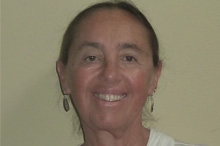
Dr. Linda Rudolph is being honored as a Champion of Change for her work on the front lines to protect public health in a changing climate.
In 2004, I was the local health officer and public health director in Berkeley, California. We worked to improve children’s health by making it easier for kids to walk or bike to school, promoting better access to healthy foods through community gardens and local farmers markets, and reducing exposures to chemicals and pollutants that trigger asthma. Do you see the connections to climate change? I didn’t, at first.
But as California began tackling climate change, two things quickly became apparent to me. First, the impacts of climate change exacerbate many of our most serious health problems – the very chronic diseases I was seeing in all of the communities I served, and which were (and continue to be) especially prevalent in low income communities with limited resources for health care. Second, many of the strategies that reduce greenhouse gas emissions and strengthen community resilience in the face of climate change are the very same strategies that help us to reduce obesity and chronic illness.
I now believe that climate change itself is the greatest health threat we face in the 21st century. I focus on climate change in my professional work, because if we don’t act urgently and comprehensively, climate change will undermine all our other public health efforts. I’ve also started advocating for climate action as a private citizen, in my personal time, because to truly move the needle (or thermometer) on climate change, we must also engage the passion, activism and voice of every American.
People everywhere care about their health and about the health and well-being of their children and grandchildren. But health workers have a critically important role to play in addressing climate change. We can connect the dots: warmer temperatures can mean higher ozone levels, longer pollen seasons, and more asthma and allergies. More droughts can mean higher food prices, greater food insecurity, and more obesity and diabetes.
Public health professionals can engage with community partners to identify assets and solutions that build community resilience and fight climate change at the same time. For example, parks and tree canopies soak up carbon and other pollutants, create safe places for kids to play and provide shade to help prevent heat illness. A healthy community design offers transportation options that increase physical activity, decrease air pollution and preserve nearby farmlands and open space.
We can find win-win solutions that fight carbon pollution and climate change, reduce health inequities, and improve the health of everyone in our communities, but it will take a different kind of public health work. It will require that we collaborate closely with those who work in transportation, housing, agriculture, and many other sectors, and that we engage deeply with people in the most vulnerable communities. All of us need to let our policy makers and leaders know that we need to act vigorously on climate change right now, to protect the health of our children, ourselves, our neighbors, and our communities.
My work has shown me that climate action can make our communities more vibrant, attractive and livable. It can make our food systems more diverse and sustainable, our air and water cleaner, and our communities greener and more walkable, all of which will have huge health benefits. In California, we’ve already begun to accomplish some of this, thanks to state climate change legislation championed across party lines and supported and strengthened by the involvement of public health professionals, community advocates and organizations, and residents of communities throughout the state. As a nation, we must do the same – work together to take climate change action that benefits our health now, and protects our health into the future.
Dr. Linda Rudolph is the Co-Director of Climate Change and Public Health Project at Public Health Institute.
Learn more about Energy and Environment, Health CareSafeguarding our Environment for Health and Fighting Climate Change
Posted by on July 17, 2013 at 1:57 PM EDT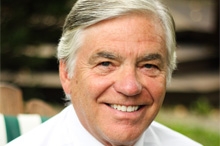
Dr. William Rom is being honored as a Champion of Change for him work on the front lines to protect public health in a changing climate.
As author of Environmental Policy and Public Health: Air Pollution, Global Climate Change, and Wilderness and an instructor on environmental and global health at New York University for 25 years, I have reached dozens of policy students and medical residents and fellows. I have been involved in air pollution policy for the past decade, leading the American Thoracic Society’s Environmental Health Policy Committee, presenting data to the Clean Air Scientific Advisory Committee and meeting with the EPA Administrator to encourage stricter standards ground level ozone and particulate matter to protect human health. I delivered Medical Grand Rounds on Climate Change and Global Public Health to international meetings and medical schools from New York to Addis Ababa, Ethiopia and Cape Town, South Africa. I traveled by dogsled with the Thule Inuit in northwestern Greenland in 2008, where I found that the ice was melting faster than ever before with four more months of open seawater compared to 30 years ago. I have canoed the major Arctic Rivers including the Albany, Churchill, Back and South Nahanni. As a Fellow for two decades at The Explorer’s Club, I have been awarded four Flag expeditions, including travel with the Thule Inuit by dogsled in northern Greenland to obtain eyewitness accounts of the effects of global warming. To inform my professional colleagues, I have organized symposia on the topic for pulmonary doctors over the past decade. Currently, Dr. Kent Pinkerton and I are co-editing a textbook on Climate Change and Global Public Health.
Climate change is projected to exacerbate heat waves and interactions with air pollutants to increase cardiorespiratory mortality. Hurricanes may become more frequent and intense, but most worrisome are potential storm surges that can cause widespread damage. New York University and Bellevue Hospitals, where I work, are still recovering from Hurricane Sandy’s 13-foot storm surge. The salt water damaged hospital electrical infrastructure in the basements of both hospitals, and we were forced to relocate for three months. This resulted in patient evacuations and required the salvage of many thousands of research samples.
As Director of NYU’s Division of Pulmonary, Critical Care, and Sleep Medicine and Bellevue Hospital’s Chest Service for 25 years, I have witnessed environmental medicine first hand. When air pollution particulates and ground-level ozone increase, we admit more asthma patients and chronic obstructive pulmonary disease patients in our Chest Service and ICU.
I am also interested in the “smoky houses” problem from indoor biomass burning and have recently chronicled this challenge in photos from Ethiopia and Madagascar. At Addis Ababa’s Black Lion Hospital I served as faculty, training their first two pulmonary fellows. We observed lung disease, pneumonia, and lung cancer from indoor air pollution.
I served as a legislative fellow in health and environmental policy in the U.S. Senate for Senator Hillary Rodham Clinton. For her, I wrote the Caribbean Wilderness Act (signed into law by President Bush), the Family Asthma Act, the Environmental Public Health Tracking Act, and the Electronic Medical Record and Health Quality Act. I served on the Environmental Roundtable for Research and Education in the Environmental Health Sciences of the Institute of Medicine and am on CDC’s WTC Health Program Scientific/Technical Advisory Committee.
Through all of my work, I’ve found it is critical to reach a larger stage on climate change and explain how its consequences affect our health.
Dr. William Rom is Director of the New York University Pulmonary Division and Bellevue Hospital Chest Service.
Learn more about Energy and Environment, Health CareThreat of Climate Change to Human Health
Posted by on July 17, 2013 at 1:04 PM EDT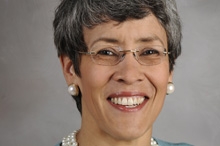
Susan Pachero is being honored as a Champion of Change for her work on the front lines to protect public health in a changing climate.
As a pediatrician, I thought I’d never find anything as fulfilling and joyful as taking care of children. I am now overcome by an overwhelming sense of responsibility to protect and inform my patients and their families about the real effects of climate change on their health.
In 2006, I took my children to watch the documentary An Inconvenient Truth as part of their school homework. I remember my hesitance. I was obviously aware of climate change, but it had always seemed distant. The soundtrack from Melissa Etheridge’s song “I Need to Wake up" still runs through my mind. So does the closing message: “Write to Congress, and if they do not listen, run for Congress.” I remember my children’s passionate response, and it still brings a smile to my heart.
I started as a volunteer for the Climate Reality Project, later became a Climate Reality mentor and then a district manager for the organization’s efforts in Puerto Rico. I led volunteers to share the climate story with anybody willing to listen.
I remember a few close friends, patients, and colleagues sharing their concern of “losing me to this climate thing.” I disagreed. As a physician, I am committed to the art of healing. I have to approach anything and everything that may affect my patient’s mental or physical well-being. The reality is that climate change will affect generations to come. I have the responsibility to share knowledge on the challenges we face as a society-- particularly when there is a chance for harm to the health and security of vulnerable people.
I give talks as a Climate Leader with the Climate Reality Project to help fill the knowledge gap on climate change. I have geared my efforts not only to engage the general public, but also to target individuals and groups involved in health care. As health care providers, we are trusted advocates and messengers. I have found that even in the Texas Medical Center, among the largest in the world, knowledge regarding the health dangers related to a changing climate is limited.
I work as a representative for the Puerto Rico Climate Change Council, working with Puerto Rico’s Enlace Latino de Accion Climática, sponsored by El Puente Community Group for Peace and Justice, and I participated as a representative and author for Puerto Rico’s “National Climate Assessment - Southeast Region-Health Sector Report (2012).” I currently work with the American Academy of Pediatrics and am a co-author of a position statement on the need to acknowledge the harmful effects climate change has on American children. Additionally, I lead an effort with the American Lung Association Plains-Gulf Region in Houston to release a statement regarding the changing climate in our state and the need to “fight for the air.” In consultation with Dr. Ronald A. Sass from the James A. Baker III Institute for Public Policy at Rice University in Houston, I am forming a coalition of individuals with diverse backgrounds, among them health care, , faith groups, student organizations, academics, scientific fields, and local community representatives, who openly acknowledge the need to engage our communities in open discussions that will facilitate the implementation of climate mitigation and adaptation strategies for the state of Texas.
As a physician, my role in promoting health extends beyond my interaction with patients in the office. I have the responsibility to help restore balance in the lives of my patients and try to make a difference for all Americans. I cannot do anything less for our planet.
Susan Pachero is an Associate Professor at the University of Texas Health Science Center.
Learn more about Energy and Environment, Health CareHealthy Air, Healthy Kids
Posted by on July 17, 2013 at 12:20 PM EDT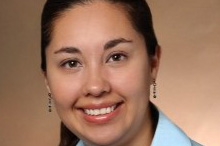
Dr. Yadira Caraveo is being honored as a Champion of Change for her work on the front lines to protect public health in a changing climate.
Growing up in Colorado, you learn to appreciate clear blue skies and fresh mountain air – until the smog settles into the bowl-shaped Denver metro area, and suddenly the view isn’t so pretty. During our training medical professionals like me don’t receive much education on the potential health effects of what humans put into the air. We learn about bioterrorism, the negative effects of the food we put into our bodies, and the lung diseases affected by things as varied as keeping pigeons to popping too much popcorn. But we never really learn about the cloud of “smog” sitting over Denver and how it will affect our patients.
Upon graduating from medical school, I moved to Albuquerque, New Mexico to complete my training in pediatrics. Albuquerque is another bowl-shaped city flanked by mountains, where bad air can settle and linger for days. Living near the extinct volcanoes on the city’s west side, I could see the occasional cloud of smog settled over the city as I would drive into work. On those days I knew what I would see all day at my shift in the emergency department, the children’s ward, or the urgent care clinic: asthma exacerbations. On days where a brown blanket covered the desert city, I knew I’d be ordering a lot of albuterol, a medicine to help people breathe easier, putting kids on oxygen, and speaking to respiratory therapists. It would be a day of seeing children struggle just to breathe.
The focus on child advocacy drew me to residency in New Mexico. I was interested in learning about how to interact with politicians and candidates, advocate for increased healthcare access in a poor state, and protect the public programs my patients relied on. I was selected as a resident leader by the National Hispanic Medical Association and an intern in legislative affairs by the American Academy of Pediatrics. I spent time in Washington with both groups and connected with members of the Union of Concerned Scientists (UCS) and Voces Verdes. I participated in a conference on the public health concerns caused by emissions from coal-fired power plants and finally learned what I hadn’t been taught in medical school.
As a Latina, I am naturally drawn to Latino health issues. Nearly 50 percent of Latinos live in counties that regularly violate the ground level ozone, or smog, standards set by the Environmental Protection Agency, even though our standards for clean and safe air should be even stronger. EPA estimated that further lowering the level of ozone considered safe would prevent thousands of asthma exacerbations, heart attacks, missed days of school, and hospital visits and deaths. Obviously clean air affects everyone, but children are at a higher risk of these health effects than the adults who have the power to control pollution. Due to young children’s size, faster heart rates, and immature systems, their lungs and brains are particularly vulnerable to toxins in our air, water, and environment. Exposure at an early age could spell years of chronic illness and an impaired ability to learn, play, and work. Through UCS and Voces Verdes, I advocated for tightening emission standards for coal-fired power plants, and I continue to raise awareness about the health effects of climate change and air pollution.
Since leaving residency and starting private practice in Colorado, my advocacy efforts have shifted in part to local healthcare access issues in my hometown county and streamlining the referral system for children at risk of physical and cognitive delays due to various issues. But every time I drive down the hill into Denver and see the brown cloud hanging over the city, I worry for my patients and think of what else we can do to ensure that our children are not just eating healthy, growing, and learning but breathing safe air.
Dr. Yadira Caraveo is a General Pediatrician.
Learn more about Energy and Environment, Health CareCaring for Ourselves is Caring for Our Earth
Posted by on July 17, 2013 at 11:54 AM EDT
Dr. Georgia Milan is being honored as a Champion of Change for her work on the front lines to protect public health in a changing climate.
Last year, after 30 years as a family doctor, I decided to leave my clinical practice to focus on global health issues. I determined that the most significant public health threat of our time is climate change.
In some places, we are already seeing a rise in the number and intensity of floods, forest fires and other natural disasters. Infectious diseases are changing in response to changing climate patterns. Extreme weather events are threatening our food and water supplies. As ecosystems adjust to these changes, we are seeing more species face the threat of extinction. Air quality threats such as ozone pollution, commonly known as smog, are becoming harder to address, which can lead to increased disease levels and premature deaths. These problems are projected to get worse as our climate continues to warm.
Through my humanitarian work in other countries and as a physician with the Indian Health Service, I have seen the interdependence of people with the natural world and how much knowledge and appreciation of this is being lost in our modernized societies. It seems we have even forgotten our responsibility to future generations. But challenges linked to climate change are reinforcing how changes in the environment put our health and our children’s future in jeopardy.
It is clear to me that people need to hear from their doctors and the medical community about the potential human health impacts of climate change .
In Montana, we are discussing health impacts of climate change in a variety of forums. I work with a team that presents the annual “Turning the Tide” conference at St. Patrick’s Hospital in Missoula, which focuses on the connections between spirituality, science and health. This year, the topic was climate change and the event, “Reclaiming Human Health by Restoring the Planet,” included panels featuring spiritual leaders, climate experts and health professionals. The community participates through working groups to look at solutions to critical challenges.
People in Montana are starting to understand these challenges and seek out information from health professionals so they can make better decisions about projects like the proposed Otter Creek Mine and the Tongue River Railroad which would expand coal mining, transportation, and exports from Montana to Asia.
I am excited about the opportunities presented by being a Champion for Change and look forward to exploring more ways to help spread the word about the importance of addressing climate change now, before the threat to our health worsens.
Dr. Georgia Milan is a Physician.
Learn more about Energy and Environment, Health CareHealthy Climate, Healthy People
Posted by on July 17, 2013 at 11:03 AM EDT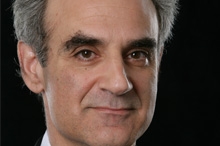
Gary Cohen is being honored as a Champion of Change for his work on the front lines to protect public health in a changing climate.
As we continue to learn more about climate change, we are realizing that it is fundamentally a health issue that will affect everyone in the world. How it damages our health depends on where we live. If we live in Beijing or Baton Rouge, Louisiana, the air could become so poisoned we can't go outside of our homes. If we live in the Midwest of the United States, extreme weather may wreck our communities and heat waves may destroy our crops and increase risk of heat exhaustion. If we live in New York or New Orleans, we may experience stronger hurricanes more often that can flood our streets, trap us in homes with no power, and shut down our hospitals. For many communities climate change can lead to increased risk of asthma among our children and respiratory disease among our most vulnerable citizens. We are learning that climate change impacts can change the patterns of infectious diseases like Dengue fever and malaria, which are spreading by mosquitoes to places that have never seen these diseases before. We are learning that it is not possible to have healthy people on a sick planet.
These are all reasons why the healthcare sector has a unique responsibility to lead the fight against climate change.
First, we need to get better prepared for climate change impacts in our communities. Our hospitals and clinics need to be resilient and fortified so they can anchor the community response during extreme weather events. They need to be the last buildings standing in a hurricane rather than one of the first ones to go down. For example, if hospitals have on-site power they can continue to provide critical care to patients even if the grid is down for days. On-site power can also make hospitals more energy efficient, reduce greenhouse gas emissions and help hospitals save money.
Second, the healthcare industry appears to be addicted to fossil fuels. Hospitals use twice as much energy per square foot as schools and offices in part to fuel all the life-saving equipment they operate 24/7. That makes hospitals major carbon polluters. Given that healthcare is underpinned by an ethical imperative to “First, Do No Harm," they have a responsibility to reduce their carbon pollution and be leaders on renewable energy, energy efficiency, and other carbon mitigation efforts that support healthier people in healthier communities. Healthcare represents 18 percent of our economy. If we can harness the purchasing power of this critical sector, we can drive our economy toward a low carbon development path that will reduce our rising disease burden and spiraling healthcare costs. Toward this end, we have built a global coalition for Healthier Hospitals that is accelerating the adoption of sustainable and climate-friendly practices.
Third, healthcare professionals are some of the most effective spokespeople in our society. When we wanted society to address tobacco, we got nurses and doctors to stop smoking first. We banned cigarettes from hospitals, and we educated our patients about the dangers of tobacco. In the global campaign to kick our addiction to fossil fuels and toxic chemicals, doctors, nurses, and other healthcare workers need to be powerful spokespeople for policies that put a price on carbon and support the transition to a renewable energy and toxic-free future. There are 5 million healthcare workers in America. We can enlist them to become climate champions in our communities for local solutions and critical spokespeople at the state, national, and global levels for laws and treaties to rein in carbon pollution.
In this next period of our collective history, we will need to redefine the purpose of healthcare. It can no longer be exclusively focused on treating chronic disease in individual patients. Healthcare needs to expand its mission and address the environmental and social conditions that are making people sick in the first place. Healthcare needs to lead the fight against climate change. It is our best remedy to this global health emergency.
Gary Cohen is the President of Health Care Without Harm and Co-Founder of Healthier Hospitals Initiative.
Learn more about Energy and Environment, Health Care
- &lsaquo previous
- …
- 5
- 6
- 7
- 8
- 9
- 10
- 11
- 12
- 13
- …
- next &rsaquo








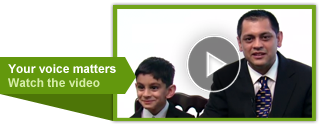
Twitter